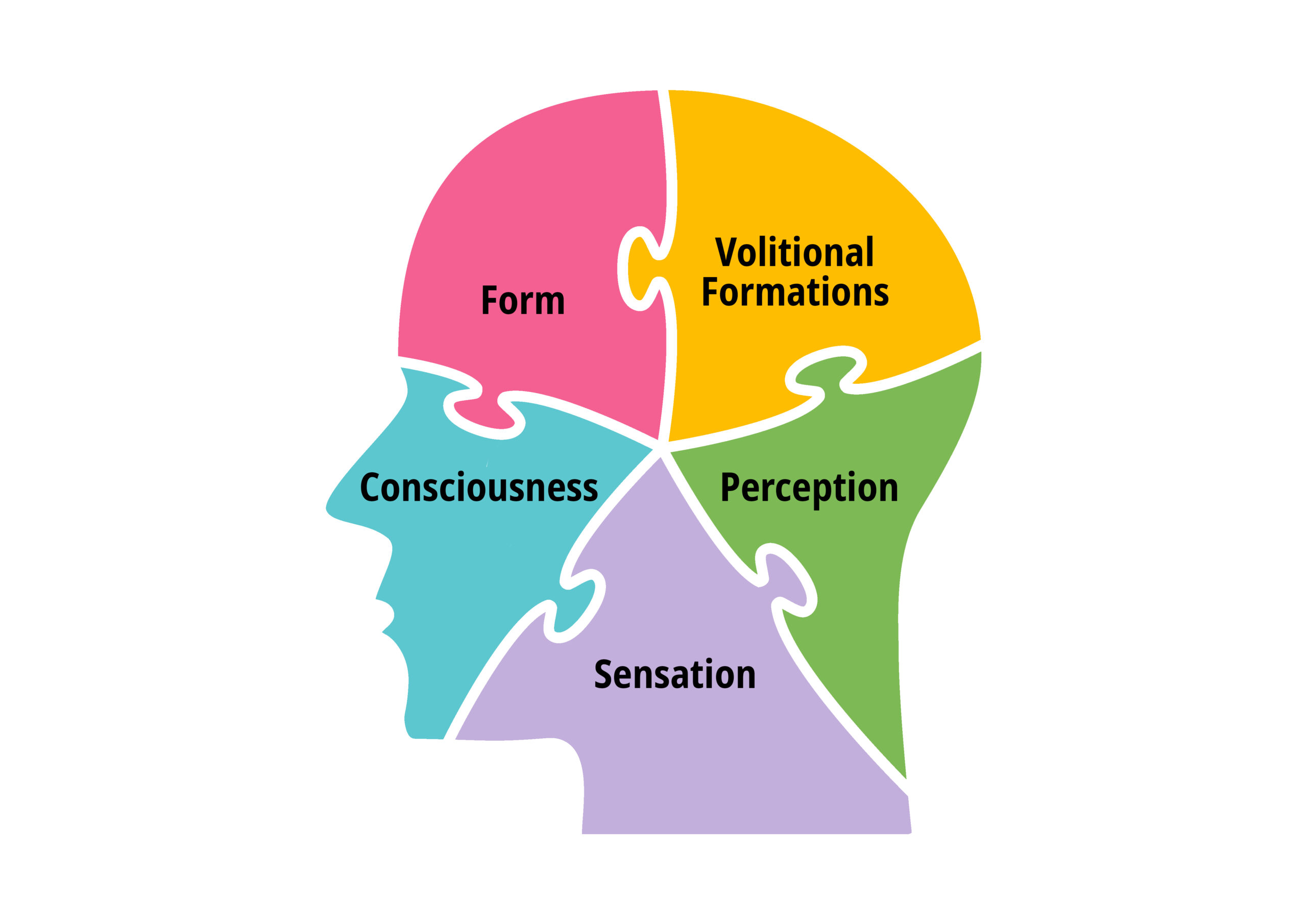
The Buddha ended his statement of the First Noble Truth with the sentence, “In brief, the five aggregates subject to grasping are suffering (dukkha).”[1] Simply put, the five aggregates are the five physical and mental factors that, in combination, are experienced as a self. They are:
- Form
- Sensation or feeling
- Perception
- Volitional formations
- Consciousness [2]
Form is simply the physical body.[3]
Sensation is the experience arising from the contact between sense object and sense organ, for example, when visual form contacts the eyes, or sound contacts the ears, and so on. However, vedanā, the word translated to “sensation”, carries one other important aspect: whether a sensory experience is pleasant, unpleasant or neither.[4] In fact, remembering that Buddhism is primarily (or solely) concerned with liberation from all suffering, this aspect is the most important among everything that comes under the umbrella of the “sensation” aggregate.
Perception is the mind picking out important characteristics of what is being sensed, and also recognizing what had previously been perceived. You can think of this as like a computer program that recognizes cats in pictures: it figures out which parts of the picture contains cat features like cat eyes and paws, it recognizes the whole cat, and it picks out important characteristics of the cat it sees, such as, “white, Persian”, or “wears boots and hat, carries a sword.”

Volitional formations are what the mind constructs, including its reactions to what it perceives. They include thoughts and emotions, things that enable the initiation of action (e.g., intentions, planning), and the actions themselves. We had an American friend visiting Singapore for the first time. Rehearsals for National Day celebrations were going on. Part of the celebration was having fighter jets fly low over downtown with their massive sonic booms. Our friend was in the part of downtown far enough from the rehearsals not to know it was happening, but close enough to get a full experience of sonic boom from a F15 fighter formation flying right above. From her perspective, she was just walking along when, out of nowhere, there was this sudden huge BOOM surrounding her. She froze, her face turned white, and she thought, “This is how I’m going to die.” To her utter confusion, the Singaporeans around her stopped whatever they were doing, looked up, and cheered out loud. We had to explain it to her to calm her nerves. Those thoughts involving, “this is how I’m going to die”, those emotions involving fear and confusion, and then all her laughter after she figured out the comedy of what just happened, those are volitional formations.
Volitional formations also affect what is perceived, so yes, there is at least one feedback loop in the system. For example, if you have good feelings for somebody, all you can perceive about them are their attractive aspects, but if you come to have bad feelings for the same person, all you can perceive about them are their unattractive aspects. That last sentence is the summary of the vast majority of romantic relationships in the world. Emotions and other volitional formations always affect perception.
Finally, consciousness is “that which knows”, “that which discerns”, or “that which cognizes”[5]. Buddhist teacher and author Ajahn Brahm beautifully depicts consciousness as “the screen upon which all these sentient experiences are played out”[6]. Soryu likes to remind us that as lovely as this analogy is, it fails to relay the insight that consciousness is an active process, not a passive object. Therefore, I might say it is more like a LED screen: it appears to only be passively playing out a movie fed to it, but behind it, there is active processing.
Activities
References
[1] The Pali term for “five aggregates subject to clinging” is pañcupādānakkhandhā.
[2] In Pali, the five are: rūpa, vedanā, saññā, saṅkhāra and viññāṇa, respectively. The Pali word for aggregate is khanda.
[3] To be more technical: form is physical matter and, in general, we identify with that part of form that is our body.
[4] Saṃyutta Nikāya 22.79.
[5] Ibid.
[6] Ajahn Brahm on the Five Aggregates (YouTube link).
Featured image by Colin Goh.

